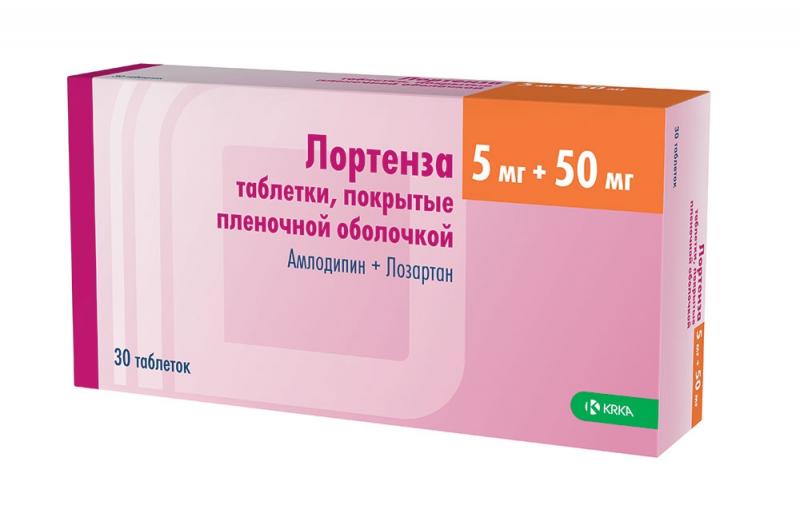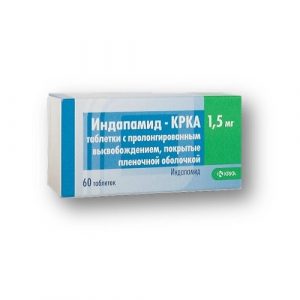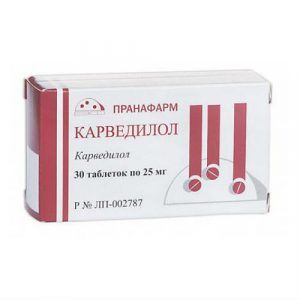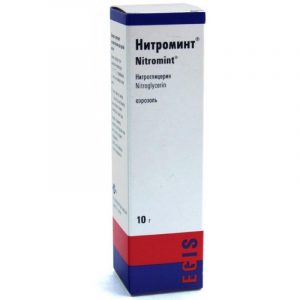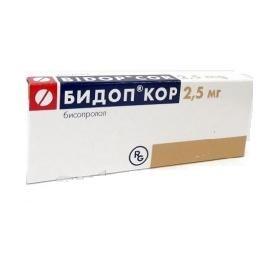Description
Pharmacological action
Pharmacological action
Pharmacological action – antihypertensive.
Pharmacodynamics
The drug Lortenza is a combination of two active components with a complementary antihypertensive effect: amlodipine (BKK) and losartan (angiotensin II receptor antagonist – ARA II).
The active components of the drug have a different mechanism of antihypertensive action: amlodipine causes vasodilation, reducing OPSS, losartan acts on RAAS (inhibits the effects of angiotensin II), which leads to a more pronounced decrease in blood pressure compared with that of each drug with monotherapy.
Amlodipine
A derivative of dihydropyridine, blocks calcium channels and reduces the transmembrane flow of calcium ions to cardiomyocytes and vascular smooth muscle cells. The antihypertensive effect of amlodipine is associated with a direct relaxing effect on the smooth muscles of arterial vessels. In preclinical studies, amlodipine had a more pronounced effect on vascular smooth muscle cells compared with cardiomyocytes. Amlodipine does not adversely affect either AV conduction or myocardial contractility.
Reduces renal vascular resistance and increases renal blood flow.
Studies of amlodipine in patients with CHF II ² IV functional class according to NYHA classification (classification of the New York Heart Association) showed that amlodipine does not adversely affect exercise tolerance, ejection fraction or concentration of lipids and glucose in blood plasma. After a single oral administration of amlodipine, the action begins after 2 ² 4 hours and lasts for 24 hours. The maximum antihypertensive effect is achieved no earlier than 4 weeks after the start of therapy. Amlodipine lowers blood pressure in patients in the supine and sitting position, as well as during physical exertion. Due to the gradual development of the pharmacodynamic effect, amlodipine does not cause a sharp decrease in blood pressure or reflex tachycardia. Amlodipine reduces the severity of left ventricular hypertrophy. The hemodynamic effects remain unchanged with the long-term use of amlodipine.
losartan
Synthetic ARA II (type AT1) for oral administration. Angiotensin II is a powerful vasoconstrictor, the main active hormone of RAAS and an important determining pathophysiological link in the development of arterial hypertension (AH). Angiotensin II binds to the AT1 receptors found in many tissues (vascular smooth muscle, adrenal glands, kidneys and heart) and performs important biological functions, including vasoconstriction and aldosterone release. Angiotensin II also stimulates the proliferation of vascular smooth muscle cells.
Losartan selectively blocks AT1 receptors. Losartan and its pharmacologically active carboxylated metabolite (E-3174), both in vitro and in vivo, block all physiological effects of angiotensin II, regardless of the source or route of its synthesis.
Losartan does not have the properties of an agonist and does not block the receptors of other hormones or ion channels involved in the regulation of cardiovascular activity. Losartan does not inhibit ACE, which destroys bradykinin. Accordingly, it does not cause an increase in the frequency of undesirable effects mediated by bradykinin.
Suppression of the regulation of renin secretion by angiotensin II by the negative feedback mechanism during treatment with losartan causes an increase in plasma renin activity (ARP), which leads to an increase in the concentration of angiotensin II in blood plasma. However, the antihypertensive effect and a decrease in the concentration of aldosterone in blood plasma remain indicating effective blockade of AT1 receptors. After stopping the administration of losartan, ARP blood and the concentration of angiotensin II in blood plasma are reduced within 3 days to the original values.
Pharmacokinetics
Amlodipine
Absorption. When taken orally in therapeutic doses, amlodipine is well absorbed. Cmax in blood plasma is reached after 6-12 hours. Absolute bioavailability is from 64 to 80%. Eating does not affect the absorption of amlodipine.
distribution. Vd is about 21 l / kg. Css in blood plasma is reached 7-8 days after the start of the drug. Linking blood plasma proteins – 98%.
Metabolism. Amlodipine undergoes a slow but active metabolism in the liver in the absence of a significant effect of the primary passage. Metabolites do not have significant pharmacological activity.
Withdrawal. The final plasma T1 / 2 is 30 ² 40 hours. Plasma clearance is 7 ml / min / kg. About 60% of metabolites and 10% of amlodipine are excreted unchanged by the kidneys, 20 ² 25% through the intestines.
Pharmacokinetics of special patient groups
Patients with impaired liver function. Experience with amlodipine in patients with impaired liver function is limited. In patients with impaired liver function, an extension of T1 / 2 is noted.
losartan
suction. After oral administration, losartan is well absorbed. Systemic oral bioavailability of losartan is approximately 33%. Cmax of losartan and its active metabolite in blood plasma are reached after 1 and 3-4 hours, respectively.
distribution. Losartan and its active metabolite are 99% bound to plasma proteins (mainly albumin). Vd of losartan is 34 liters.
Metabolism. Losartan undergoes metabolism during the initial passage through the liver with the formation of an active carboxylated metabolite (E-3174) and other inactive metabolites. Approximately 14% of a dose of losartan administered iv or orally is converted into its active metabolite. After ingestion or iv administration of radioactive carbon-labeled potassium losartan (14C losartan), most of the radioactive label in the bloodstream corresponded to losartan and its active metabolite. The minimum level of biotransformation of losartan into its active metabolite was observed in approximately 1% of patients participating in clinical trials.
Withdrawal. The plasma clearance of losartan and its active metabolite is 600 and 50 ml / min, respectively. The renal clearance of losartan and its active metabolite is 74 and 26 ml / min, respectively. When losartan is taken orally, about 4% of the dose is excreted by the kidneys unchanged and 6% of the dose is excreted by the kidneys as an active metabolite. The pharmacokinetics of losartan and its active metabolite is linear when taken orally in doses up to 200 mg.
When administered, the concentrations of losartan and its active metabolite in blood plasma decrease exponentially with a final T1 / 2 of about 2 and 6 ² 9 hours, respectively. At a dose of 100 mg taken once a day, neither losartan nor its active metabolite cumulate in blood plasma. Losartan and its metabolites are excreted by the kidneys and through the intestines with bile. When ingestion and iv administration of 14C of losartan in humans, about 35 and 43% of the radioactivity of losartan and its active metabolite, respectively, was excreted by the kidneys, 58 and 50%, respectively, through the intestines.
Pharmacokinetics of special patient groups
Elderly patients. The concentrations of losartan and its active metabolite in blood plasma in elderly patients with hypertension do not significantly differ from these indicators in young patients with hypertension.
Paul Plasma losartan concentrations in women with hypertension were 2 times higher than the corresponding values ² ¹ ² ¹in men with hypertension. The concentration of the active metabolite in men and women did not differ.
Patients with impaired liver function. In patients with mild to moderate alcoholic cirrhosis of the liver, when taking losartan orally, the concentrations of losartan and its active metabolite in blood plasma increased 5 and 1.7 times, respectively, in comparison with similar indicators in young healthy male volunteers.
Patients with impaired renal function. Plasma losartan concentration does not change in patients with Cl creatinine greater than 10 ml / min. The AUC of losartan in patients on hemodialysis was approximately 2 times higher than the AUC of losartan in patients with normal renal function. The concentration of the active metabolite in blood plasma did not change inpatients with impaired renal function or in patients undergoing hemodialysis. Losartan and its active metabolite are not excreted by hemodialysis.
Indications
Arterial hypertension (patients who are shown combination therapy with amlodipine and losartan).
Contraindications
hypersensitivity to the active active ingredients and / or auxiliary components of the drug
pregnancy and the period of breastfeeding (see Use during pregnancy and lactation )
severe liver failure (more than 9 Child-Pugh score)
hemodynamically pronounced stenosis of the aortic orifice
hemodynamically unstable heart failure after acute myocardial infarction
shock (including cardiogenic severe arterial hypertension
less than 90 mmHg)
severe renal impairment (creatinine Cl less than 20 ml / min)
use in patients on hemodialysis
simultaneous use with aliskiren in patients with sugar m diabetes or renal dysfunction (Cl creatinine less than 60 ml / min)
lactose intolerance, lactase deficiency syndrome glucose-galactose malabsorption
age 18 years (effectiveness and safety are installed).
Caution: bilateral renal artery stenosis or stenosis of a single kidney artery, condition after kidney transplantation (lack of application experience), coronary heart disease, heart failure with life-threatening arrhythmias, cerebrovascular disease, primary hyperaldosteronism, history of angioedema, unstable angina pectoris, use in patients with BCC (for example, when using high doses of diuretics, severe diarrhea, vomiting and other conditions leading to hypovolemia), in patients who are not and a diet with a restriction of salt, hyperkalemia, arterial hypotension, liver failure (less than 9 points on the Child-Pugh scale), sinus node weakness syndrome (severe bradycardia, tachycardia), chronic heart failure of non-ischemic etiology (NYHA class II IV functional class), aortic and / or mitral stenosis, hypertrophic obstructive cardiomyopathy (GOKMP), acute myocardial infarction (and within 1 month after a heart attack), elderly patients.
Use during pregnancy and lactation
The use of the drug Lortenza during pregnancy is contraindicated, when pregnancy occurs, you should immediately stop taking the drug.
drugs that affect RAAS can cause damage and death to the fetus and newborn when used in pregnant women. Isolated cases of the use of ACE inhibitors during pregnancy are described.
The use of drugs directly affecting RAAS in the second and third trimesters of pregnancy is associated with fetal injuries and complications in newborns, such as arterial hypotension, neonatal hypoplasia of the cranial bones, anuria, reversible and irreversible renal failure. There have also been cases of oligohydramnios, presumably developed as a result of decreased kidney function in the fetus. In these cases, oligohydramnios was associated with limb contractures, craniofacial deformities, and fetal lung hypoplasia. In addition, there were cases of premature birth, intrauterine growth retardation and non-closure of the ductus arteriosus, however, no connection with the use of ARA II was found in these cases. The listed side effects, apparently, are not a consequence of the use of ARA II in the first trimester of pregnancy. Pregnant women taking ARA II drugs in the first trimester of pregnancy must be informed about the consequences of taking ARA II in the second and third trimesters of pregnancy.
Depending on the gestational age, a stress test may be used to assess the functional state of the fetus, non-stress test or determination of the biophysical profile of the fetus. Patients and the doctor should be aware that oligohydramnios develops with irreversible damage to the fetus. Newborns whose mothers were taken during pregnancy ARA II should be under medical supervision, given the risk of developing arterial hypotension, oliguria and hyperkalemia. With the development of oliguria, first of all, correction of blood pressure and renal perfusion is necessary. Exchange blood transfusion or hemodialysis is necessary to correct arterial hypotension and / or to replace kidney function.
amlodipine. The safety of amlodipine during pregnancy has not been established. In animal experiments, signs of reproductive toxicity were observed with high doses of amlodipine. The use of amlodipine during pregnancy is possible in the absence of safe antihypertensive alternative therapy and if the potential benefit to the mother outweighs the potential risk to the fetus.
losartan. The use of drugs acting on the RAAS in the II and III trimesters of pregnancy can cause serious damage or even fetal death, therefore, when planning a pregnancy or its onset, you should stop taking losartan and, if necessary, transfer to alternative antihypertensive therapy taking into account the safety profile. Renal perfusion in the fetus, depending on the RAAS, develops from the second trimester of pregnancy, so the risk for the fetus increases with losartan in the second and third trimesters of pregnancy.
It is not known whether amlodipine and / or losartan is excreted in breast milk, in preclinical studies in animals, significant concentrations of amlodipine and / or the active metabolite of losartan in breast milk were noted.
The use of the drug Lortenza is contraindicated in the period of breastfeeding.
Fertility
Amlodipine. In some patients with the use of BCC, reversible biochemical changes in the sperm head were noted. There are insufficient clinical data on the potential effects of amlodipine on fertility. A rat study was reported to have a side effect on fertility in male rats.
losartan. In vitro and in vivo studies, mutagenic properties of losartan were not found. Fertility and reproductive function of male rats receiving oral doses of up to 150 mg / kg / day did not change. With the introduction of doses of 100 mg / kg / day or more to female rats, a decrease in the number of yellow bodies was observed, implants and embryos.
Composition
Film-coated tablets 5 mg + 50 mg1 tab.
core
active ingredients:
amlodipine besilate (amlodipine besilate) 6.94 mg
equivalent to amlodipine – 5 mg
losartan A substance (granules) 163.55 mg
contains losartan potassium – 50 mg lactose excipients: 80 mg: lactose – 75%, cellulose – 25%) – 36.45 mg MCC – 212.96 mg pregelatinized starch – 54 mg sodium carboxymethyl starch – 22 mg iron dye yellow oxide (E172) – 0, 4 mg silicon colloidal dioxide – 1.6 mg magnesium stearate – 5.1 mg
film sheath: Opadry II white (polyvinyl alcohol – 40%, titanium dioxide (E171) – 25%, macrogol – 20.2%, talc – 14 , 8%) – 25.71 mg iron oxide yellow (E172) – 1.03 mg iron oxide red (E172) – 0.26 mg
Dosage and administration
Inside, once a day, regardless of the time of food intake, washed down with a small amount of water.
The recommended dose of Lortenza is 1 tablet / day.
The drug Lortens at a dose of 5 + 50 mg is prescribed to patients who have not achieved adequate control of blood pressure when using amlodipine at a dose of 5 mg or losartan at a dose of 50 mg in monotherapy.
The drug Lortens at a dose of 5 + 100 mg is prescribed to patients who have not achieved adequate control of blood pressure when using losartan at a dose of 100 mg or Lortens at a dose of 5 + 50 mg.
Lortensa drug at a dose of 10 + 50 mg is prescribed to patients who have not achieved adequate blood pressure control when using amlodipine at a dose of 10 mg or Lortensa at a dose of 5 + 50 mg.
The drug Lortens at a dose of 10 + 100 mg is prescribed to patients who did not achieve adequate blood pressure control when using Lortensa at a dose of 5 + 100 mg or 10 + 50 mg.
The dose is selected after previously titrated doses of the individual components of the drug. If you need to change the dose of one of the active substances in the composition of a fixed combination drug (for example, in connection with a newly diagnosed disease, a change in the patient’s condition or drug interaction), an individual selection of doses of the individual components is necessary.
The maximum daily dose is 10 + 100 mg.
Patients taking losartan and amlodipine at the same time can be transferred to a Lortenza drug containing losartan and amlodipine in the same doses.
Impaired renal function. With Cl creatinine from 50 to 20 ml / min, dose adjustment is not required.
Lortensa is contraindicated in patients with creatinine Cl less than 20 ml / min and in hemodialysis patients (see “Contraindications”).
Patients with reduced BCC. In patients with reduced BCC (for example, due to treatment with high doses of diuretics, etc.), the initial dose of losartan should be reduced to 25 mg once a day. Due to the lack of a dosage containing 25 mg of losartan in the drug Lortenza, this dose should be prescribed in monotherapy with losartan.
Before using Lortenza, it is necessary to restore bcc and sodium in plasma.
Impaired liver function. Patients with impaired function (less than 9 points on the Child-Pugh scale) are recommended to use lower doses of losartan. Due to the lack of a dosage of Lortensa containing 25 mg of losartan, this dose should be prescribed in losartan monotherapy.
The use of the drug Lortenza is possible in patients with impaired liver function (less than 9 points on the Child-Pugh scale), who, by the decision of the doctor, recommended the use of losartan in a dose of 50 mg.
Elderly patients. In elderly patients, dose adjustment of Lortenza is not required, but the dose should be increased carefully.
Children and adolescents. The drug Lortens should not be prescribed to children and adolescents under the age of 18, because there are no data on the efficacy and safety of use in this group of patients.
Side effects
Classification of the frequency of development of side effects WHO: very often -? 1/10 often – from? 1/100 to <1/10 infrequently - from? 1/1000 to <1/100 rarely - from? 1/10000 up to <1/1000 is very rare - <1/10000 the frequency is unknown - cannot be estimated based on available data. MedDRANezhelatelnye effektyChastota development AmlodipinLozartan Infectious and parasitic zabolevaniyaInfektsiya urinary tract -Frequency unknown From the blood and lymphatic sistemyLeykopeniyaOchen rarely – TrombotsitopeniyaOchen redkoChastota unknown Anemia -Frequency unknown Immune reaction sistemyAnafilakticheskie -rare Angioedema * Very redkoRedko Vasculitis including hemorrhagic vasculitis (Schenlein-Genoch purpura) Rarely Hypersensitivity Reactions and Very rarely Rarely Metabolism and nutrition Hyperglycemia Very rare – Mental disorders Insomnia mood lability (including anxiety) Uncommon – DepressiyaNechastoChastota unknown Confusion soznaniyaRedko – Nervous sistemyGolovokruzhenieChastoChasto SonlivostChastoNechasto bolChastoNechasto Headache Sleep disorders -Nechasto ParesteziyaNechasto – GipesteziyaNechasto – TremorNechasto – dysgeusia NechastoChastota unknown Muscle hypertonicity, peripheral neuropathy Very rarely – Migraine – Frequency unknown From the side of the organ of vision Visual impairment (including dip opium) Uncommon – part of the organ of hearing and labyrinth narusheniyaVertigo -Frequently Noise in ushahNechastoChastota unknown From the serdtsaOschuschenie serdtsebieniyaChastoNechasto -Nechasto Angina Myocardial infarction, arrhythmia (bradycardia, ventricular tachycardia, atrial fibrillation) Very rarely – From the side of the vessels Sensation of a rush of blood to the skin of the face Often – Orthostatic hypotension (including dose-dependent orthostatic reactions) ** Frequently Pronounced decrease in AD – Infrequently – Vasculitis, Very rarely – Thoracic system, of the small ligament, Rhinitis Infrequently – Cough Very rare Frequency unknown Digestive system Abdominal pain Frequently Frequent Nausea Often – Vomiting, dyspepsia, change in bowel movement (in lyuchaya diarrhea and constipation), oral mucosal dryness rtaNechasto – Thirst Infrequently – Constipation -Nechasto Gastritis, gingival hyperplasia Very rarely – Pancreatitis Very rare Frequency unknown Diarrhea – Frequency unknown Liver and biliary tract Hepatitis Very rare Rarely Frequency unknown Ya rash Infrequently Infrequently Alopecia, purpura, skin discoloration, increased sweating, exanthema Infrequently – Itchy skin Infrequently Frequency unknown Urticaria Very rare pilots at unknown FotochuvstvitelnostOchen redkoChastota unknown exudative erythema multiforme, exfoliative dermatitis, rapid mocheispuskanieNechasto – the part of genitals and mammary dysfunction zhelezyErektilnaya / impotentsiyaNechastoChastota unknown Gynaecomastia Uncommon – General disorders and in place vvedeniyaPovyshennaya utomlyaemostChastoNechasto Peripheral otekiChastoNechasto AsteniyaNechastoNechasto NedomoganieNechastoChastota unknown BolNechasto – Flu-like symptoms -Frequency unknown Laboratory and instrumental dannyeGiperkaliemiya Often Increased ALT activity *** Red about Hyponatremia Frequency unknown Weight gain, weight loss Infrequently – * Including swelling of the larynx, vocal cords, face, lips, pharynx and / or tongue (with the development of airway obstruction), some patients had a history of angioedema in the treatment of other drugs, including ACE inhibitors. ** Especially in patients with reduced BCC (for example, patients with severe heart failure or after treatment with high doses of diuretics). *** Usually passes after drug withdrawal. Drug Interactions The antihypertensive effect of the drug Lortens may be enhanced when used simultaneously with other antihypertensive drugs. Therefore, the simultaneous use of various antihypertensive drugs should be justified. Amlodipine The simultaneous use of amlodipine with thiazide diuretics, alpha-blockers or ACE inhibitors is considered safe. Unlike other BKK, no clinically significant interaction of amlodipine (III generation of BCC) was found with simultaneous use with NSAIDs, including and indomethacin. It is possible to enhance the antihypertensive effect of BCC with simultaneous use with thiazide and loop diuretics, ACE inhibitors and nitrates, as well as with simultaneous use with alpha1-blockers, antipsychotics. The simultaneous use of amlodipine with inhibitors of the CYP3A4 isoenzyme requires careful monitoring of symptoms of arterial hypotension and peripheral edema. With the simultaneous use of diltiazem at a dose of 180 mg / day and amlodipine at a dose of 5 mg / day in elderly patients, the systemic exposure of amlodipine increases by 60%. Erythromycin with simultaneous use increases Cmax of amlodipine in blood plasma in young patients by 22%, and in elderly patients – by 50%. At the same time, strong inhibitors of the CYP3A4 isoenzyme (ketoconazole, itraconazole, ritonavir) can increase the concentration of amlodipine in blood plasma to an even greater extent. Despite the fact that an accurate quantitative assessment of the interaction of amlodipine and inducers of the CYP3A4 isoenzyme (for example, rifampicin, St. John’s wort perforated) has not been obtained, regular monitoring of blood pressure is recommended against the background of their simultaneous use. Beta-blockers with simultaneous use with amlodipine can cause an exacerbation of CHF. Although a negative inotropic effect is usually not observed in the study of amlodipine, nevertheless, some BCCs may increase the severity of the negative inotropic effect of antiarrhythmic drugs that cause a prolongation of the QT interval (e.g. amiodarone and quinidine). A single dose of 100 mg of sildenafil in patients with hypertension does not affect the pharmacokinetics of amlodipine. Repeated use of amlodipine at a dose of 10 mg and atorvastatin at a dose of 80 mg is not accompanied by significant changes in the pharmacokinetics of atorvastatin. Ethanol (drinks containing alcohol): amlodipine, with a single and repeated use at a dose of 10 mg, does not affect the pharmacokinetics of ethanol. Antipsychotics and isoflurane enhance the antihypertensive effect of dihydropyridine derivatives. With the on / in the introduction of dantrolene during amlodipine therapy, collapse, arrhythmias, decreased cardiac contractions and hyperkalemia are possible. Calcium preparations can reduce the antihypertensive effect of BKK. With the simultaneous use of amlodipine with lithium preparations, an increase in the manifestation of neurotoxicity is possible (nausea, vomiting, diarrhea, ataxia, tremor, tinnitus). Amlodipine does not alter cyclosporine pharmacokinetics. Does not affect the concentration of digoxin in the blood serum and its renal clearance. Does not significantly affect the effects of warfarin (PV). Cimetidine does not affect the pharmacokinetics of amlodipine. In vitro studies, amlodipine does not affect plasma protein binding of digoxin, phenytoin, warfarin, and indomethacin. The simultaneous single dose of 240 mg of grapefruit juice and 10 mg of amlodipine inside is not accompanied by a significant change in the pharmacokinetics of amlodipine. A single dose of aluminum- or magnesium-containing antacids does not significantly affect the pharmacokinetics of amlodipine. losartan As with other agents that block the formation of angiotensin II and its effects, the simultaneous use of potassium-sparing diuretics (e.g. spironolactone, triamteren, amiloride, eplerenone), potassium preparations, and potassium-containing salt substitutes can lead to an increase in serum potassium. As with other drugs that affect sodium excretion, losartan can reduce lithium excretion, therefore, with the simultaneous use of lithium preparations and ARA II, it is necessary to carefully monitor the concentration of lithium in the blood serum. In some patients with impaired renal function who have been treated with NSAIDs, including selective COX-2 inhibitors, the simultaneous use of ACE inhibitors and / or ARA II, including losartan, can cause further deterioration of renal function up to the development of acute renal failure (ARF). Usually this effect is reversible. NSAIDs, including selective COX-2 inhibitors, can reduce the effect of ARA II, including losartan. Therefore, the antihypertensive effect of ARA II can be weakened with the simultaneous use of NSAIDs, in particular selective COX-2 inhibitors. Thus, the simultaneous use of the combination of amlodipine / losartan with NSAIDs should be carried out with caution in patients with impaired renal function. Double blockade of RAAS (simultaneous use of ACE inhibitors and ARA II) in patients with atherosclerosis, heart failure or diabetes mellitus with damage to target organs is associated with a higher incidence of arterial hypotension, fainting, hyperkalemia and impaired renal function (including acute renal failure) in comparison with the use of the drug in one of these groups. Double blockade of RAAS is possible only in individual cases with careful monitoring of renal function. Concomitant use of losartan with aliskiren is contraindicated in patients with diabetes mellitus or impaired renal function (creatinine Cl less than 60 ml / min) andnot recommended in other patients. No pharmacokinetically significant interactions of losartan with drugs such as hydrochlorothiazide, digoxin, warfarin, cimetidine and phenobarbital have been observed. Taking rifampicin, an inducer of drug metabolism, reduces the concentration of losartan and its active metabolite in blood plasma. In clinical studies, the use of two inhibitors of the isoenzyme CYP3A4 was studied. Ketoconazole did not affect the metabolism of losartan before the active metabolite after iv administration of losartan. Erythromycin did not have a clinically significant effect on the pharmacokinetics of losartan when administered orally. Fluconazole, an inhibitor of the CYP2C9 isoenzyme, reduces the concentration of the active metabolite of losartan and increases the concentration of losartan in the blood plasma, however, the pharmacodynamic significance of the simultaneous use of losartan and inhibitors of the CYP2C9 isoenzyme has not been established. It was shown that in patients who do not metabolize losartan to an active metabolite, there is a very rare and specific defect in the CYP2C9 isoenzyme. These data indicate that the metabolism of losartan to the active metabolite is mediated predominantly by the isoenzyme CYP2C9, and not by the isoenzyme CYP3A4. Overdose Cases of overdose with a fixed combination of amlodipine / losartan are unknown. The following are data on an overdose of amlodipine and losartan, taken separately. Amlodipine Symptoms: a marked decrease in blood pressure with the possible development of reflex tachycardia and excessive peripheral vasodilation (risk of severe and persistent arterial hypotension, including with the development of shock and death). Treatment: administration of activated carbon (the use of activated carbon in healthy volunteers immediately or within 2 hours after ingestion of 10 mg of amlodipine led to a significant decrease in its absorption). If necessary, gastric lavage is indicated. Clinically significant arterial hypotension in case of an overdose of amlodipine requires a set of measures to normalize the state of CVS, it is necessary to give an elevated position to the lower extremities, carry out continuous monitoring of the functional parameters of the heart and respiratory system, BCC and diuresis. Intensive symptomatic therapy. To restore vascular tone and blood pressure, vasoconstrictor drugs are used (in the absence of contraindications for their use) in order to eliminate blockage of calcium channels – intravenous administration of calcium gluconate. Hemodialysis is ineffective. losartan There is limited evidence of an overdose of losartan. Symptoms: a marked decrease in blood pressure, tachycardia, bradycardia, due to parasympathetic (vagal) stimulation. Treatment: with the development of symptomatic arterial hypotension, maintenance therapy is performed. Hemodialysis for losartan and its active metabolite is ineffective. Storage conditions At a temperature not exceeding 25 ° C. Keep out of the reach of children. Expiration 2 years. Active ingredient Amlodipine, Losartan pharmacy terms of sale with prescription Medicinal form tablet KRKA d.d. Novo mesto AO, Slovenia
